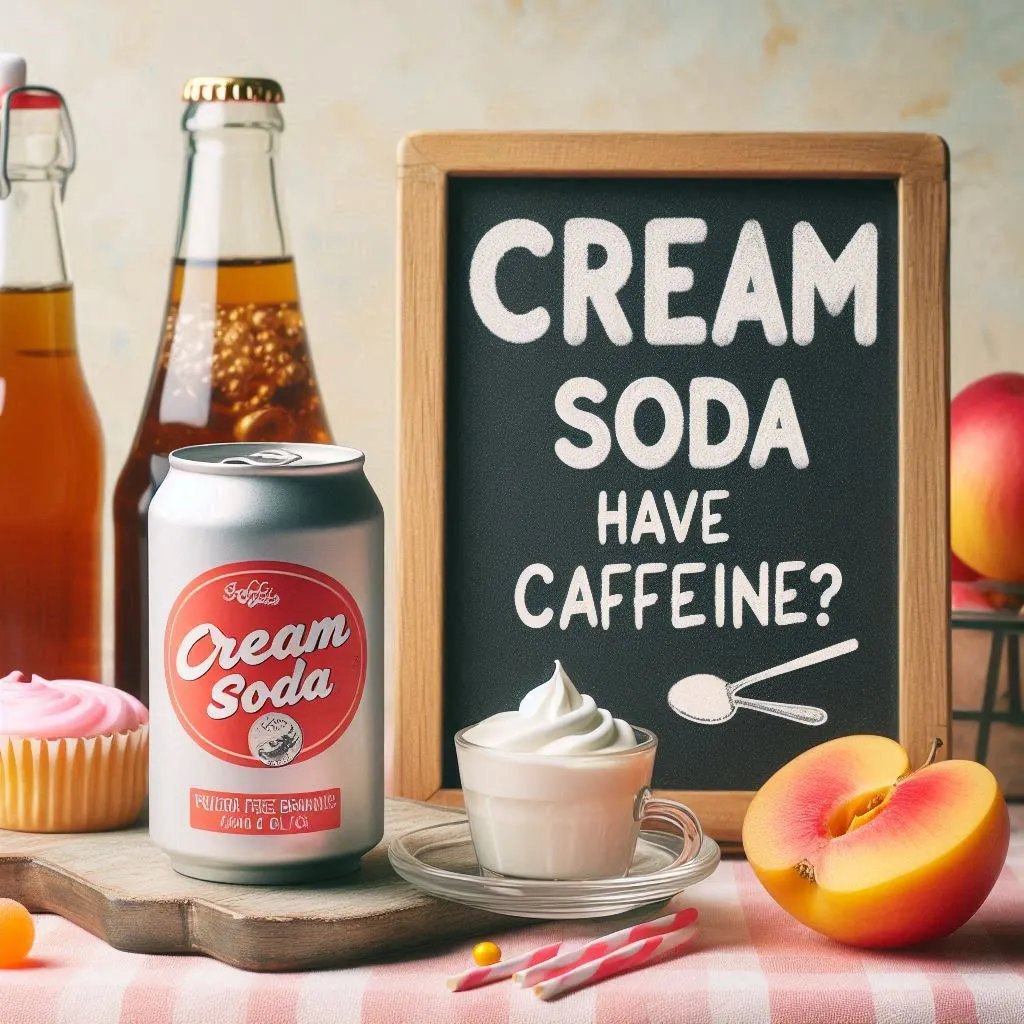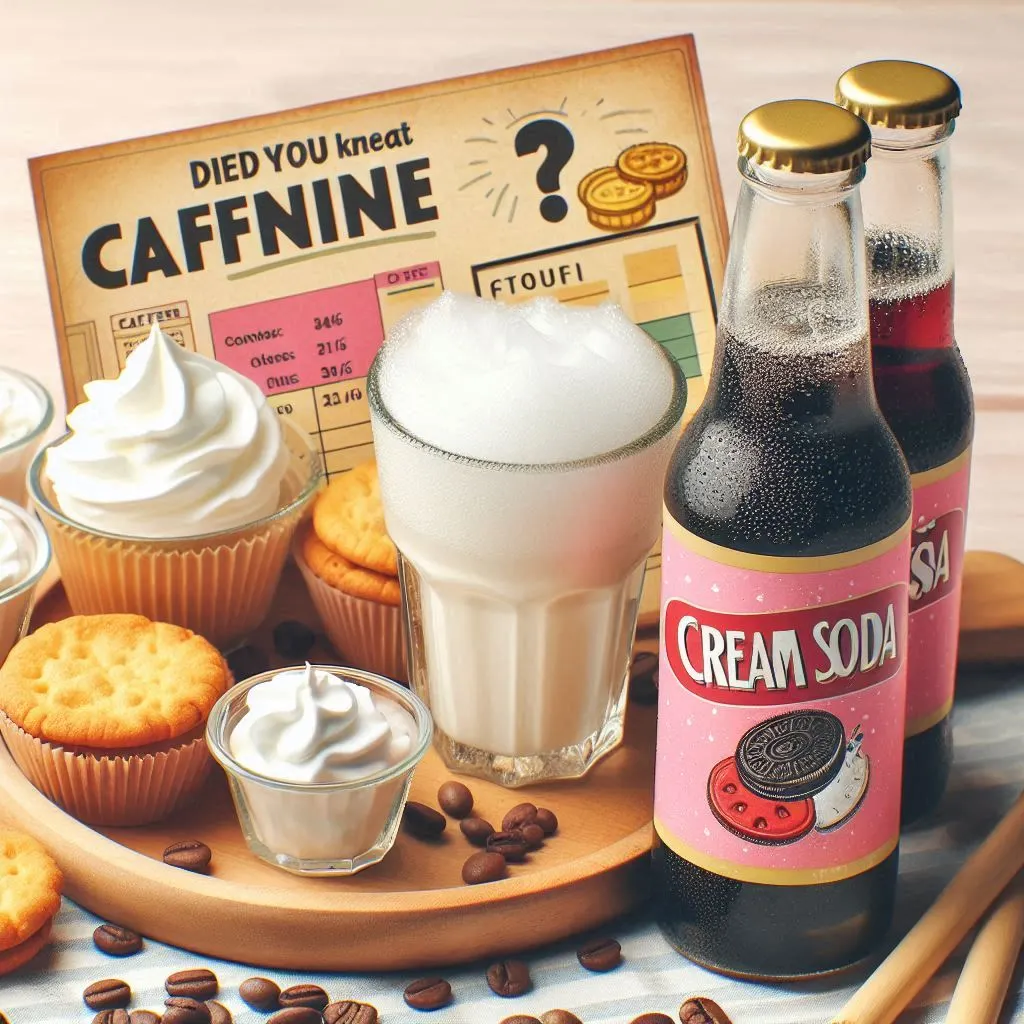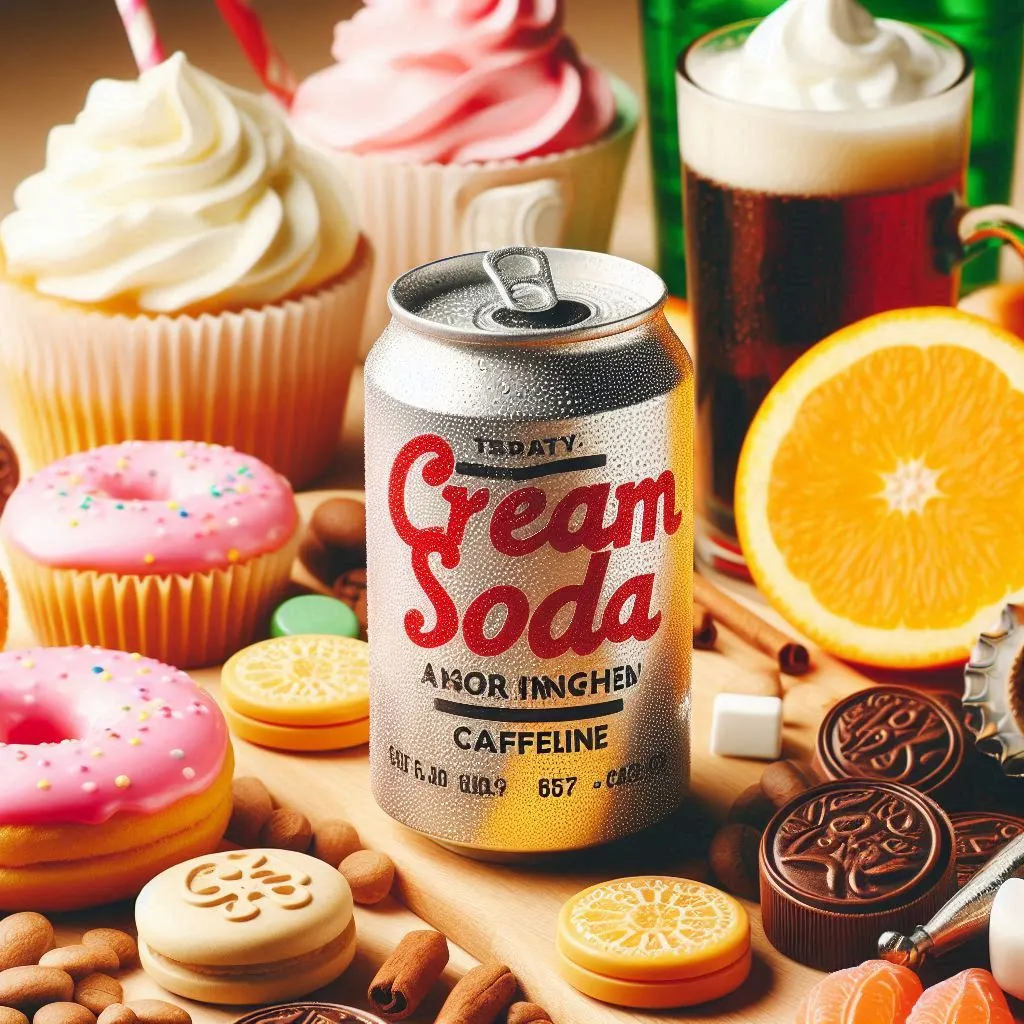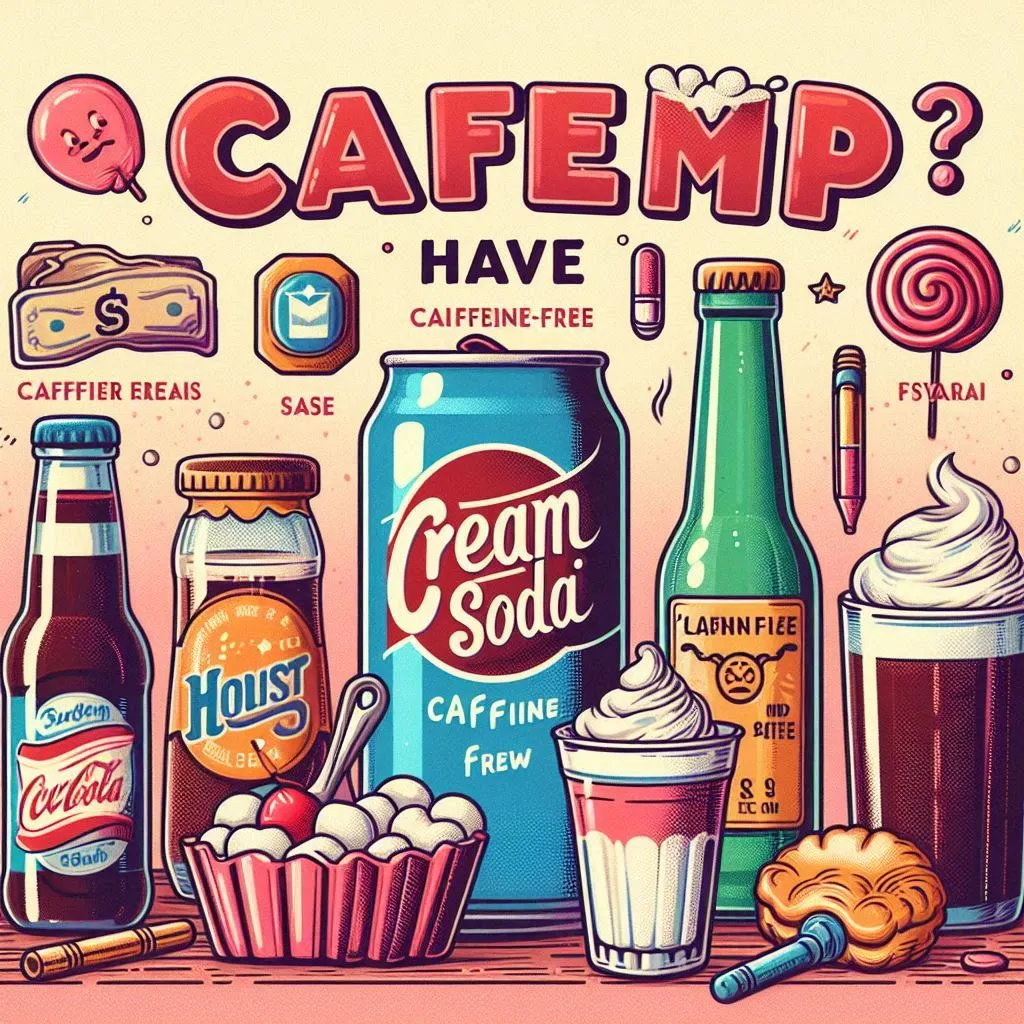Currently Empty: 0.00$

Cream soda is a beloved soft drink known for its sweet, vanilla-like flavour. People of all ages have enjoyed this nostalgic beverage for over a century.
Its origins trace back to the 19th century when early soda fountains began experimenting with different flavour combinations to create delightful drinks. Although its name suggests a dairy component, most modern cream sodas do not contain any cream. Instead, “cream” refers to the creamy, smooth taste created by combining vanilla and other flavourings.
Cream soda has evolved, and today, it comes in various forms, from the classic golden-coloured soda to vibrant red and even clear varieties. It is often a favourite among those who enjoy the rich, comforting taste of vanilla without the heaviness of a milkshake. Available around the world, cream soda can be found in both caffeinated and caffeine-free forms, depending on the brand and recipe.
2. Common Ingredients in Cream Soda
Most cream sodas share a core set of ingredients despite differences in flavour or appearance. The base typically includes carbonated water, sugar or high-fructose corn syrup, and flavourings, with vanilla being the most prominent.
These ingredients are combined to create the signature sweetness and dizziness that fans of the drink love.
Additionally, many cream sodas contain preservatives like citric acid, which helps maintain their freshness and flavour. Some brands may also add food colouring to give their soda a distinct hue, such as the famous golden or red varieties.
Several brands offer natural or organic cream sodas for those concerned about artificial additives. These drinks use real vanilla extract and organic cane sugar as sweeteners.
Some recipes include other flavourings, like caramel or spices, to create unique twists on the classic flavour.
3. Caffeine in Beverages: An Overview
Caffeine is a naturally occurring stimulant commonly found in coffee, tea, and sodas. It is known for its ability to enhance alertness and combat fatigue. Caffeine works by blocking adenosine receptors in the brain, which helps people feel more awake and focused.
While caffeine is beloved by many for its energy-boosting effects, it can also lead to issues like jitteriness, anxiety, and sleep disturbances when consumed in large amounts.
Many soft drinks, such as colas and energy drinks, contain caffeine, which adds a stimulating component to their refreshing, sugary profile. The caffeine content in beverages can vary widely, with some drinks containing high amounts and others being completely caffeine-free.
This variation makes it essential for consumers to know what they’re drinking, especially if they are sensitive to caffeine or trying to limit their intake.
Read more: Can You Drink Soda with Braces?
4. Does Traditional Cream Soda Have Caffeine?

Traditional cream-soda recipes are typically caffeine-free. Unlike colas, which often include caffeine as a standard ingredient, cream soda focuses on sweetness and flavour rather than providing a stimulant effect.
The absence of caffeine in cream soda makes it a popular choice for people who want to enjoy a refreshing soft drink without the energy boost or potential side effects associated with caffeine.
Traditional cream sodas, made with vanilla, carbonated water, and sweeteners, do not require caffeine to achieve their characteristic taste. This absence of caffeine is one of the reasons cream soda is often considered a family-friendly drink, suitable for children and adults who may want to avoid stimulants.
5. Brands of Cream Soda: Caffeine-Free vs. Caffeinated Options
The majority of commercially available cream sodas are caffeine-free. Brands like A&W, Barq’s, and Mug offer popular cream soda varieties without caffeine, making them safe choices for those looking to avoid stimulants.
These brands have long upheld the tradition of producing classic cream sodas, focusing on rich vanilla flavour and sweetness rather than adding caffeine.
On the other hand, a few specialty brands may offer cream soda variations that contain caffeine, often to appeal to those who enjoy the energy boost that caffeine provides. These options are rare but exist in specific niche markets.
If you’re specifically looking for a caffeinated version, it’s essential to carefully read the product label, as caffeine content must be disclosed by law.
For the most part, however, cream soda remains a caffeine-free favourite among soft drink enthusiasts, providing a smooth and enjoyable alternative to caffeinated sodas.
6. Popular Caffeine-Free Cream Soda Brands
Several well-known soda brands are recognised for their caffeine-free cream sodas. These brands have built a reputation for delivering high-quality, flavorful beverages without the added stimulant. Some of the most popular caffeine-free cream soda brands include:
- A&W Cream Soda: One of the most famous names in cream soda, A&W offers a classic vanilla-flavoured soda that is completely caffeine-free. It’s widely available in grocery stores and popular among cream soda lovers.
- Barq’s Cream Soda: Though Barq’s is known for its caffeinated root beer, its cream soda is caffeine-free, offering a smooth, sweet option for those who want a caffeine-free treat.
- Mug Cream Soda: Another popular choice, Mug Cream Soda is also caffeine-free, making it an excellent option for families and individuals looking for a caffeine-free soft drink.
- Stewart’s Cream Soda: Known for its nostalgic glass bottle packaging, Stewart’s Cream Soda is another caffeine-free option with a rich, creamy vanilla taste.
These brands are readily available in most supermarkets and offer a tasty, caffeine-free alternative to other soft drinks.
7. Are There Any Caffeinated Cream Soda Options?
While most cream sodas are caffeine-free, a few caffeinated options are available, although they are not widely shared. Some speciality brands may infuse cream soda with caffeine to cater to a niche audience that enjoys the traditional flavour but also wants the added kick that caffeine provides.
For example, certain craft soda companies may offer caffeinated cream soda as part of their unique or gourmet soft drink lineup. These products are often marketed as energy sodas or speciality beverages, combining the sweet, creamy taste of vanilla with the stimulating effects of caffeine.
However, these caffeinated versions of cream soda are far from the norm, and those specifically looking for them may need to seek them out in speciality stores or online retailers. Always check the ingredients label to ensure you know the caffeine content before purchasing.
8. The Appeal of Caffeine-Free Cream Soda

Caffeine-free cream soda is particularly appealing to many consumers, particularly those who prefer to avoid stimulants. Without caffeine, cream soda offers a sweet, indulgent treat that can be enjoyed any time of day without worrying about disrupting sleep or causing jitteriness.
For parents, caffeine-free cream soda is often a go-to choice when selecting soft drinks for children, as it provides all the fun and flavour of soda without the unwanted side effects of caffeine. Similarly, individuals who are sensitive to caffeine or who have medical conditions that require them to limit stimulant intake often appreciate the availability of delicious, caffeine-free options like cream soda.
Additionally, caffeine-free beverages like cream soda are ideal for social gatherings and parties. They offer guests a refreshing drink option that won’t interfere with their ability to relax and enjoy themselves. The smooth, vanilla flavour of cream soda makes it a versatile choice for various occasions.
Don’t miss: How Much Does a Soda Machine Cost?
9. Caffeine Sensitivity: How It Impacts Choices
Caffeine sensitivity is a common condition that affects how individuals react to even small amounts of caffeine. Even after consuming modest amounts, people who are sensitive to caffeine may experience side effects such as headaches, increased heart rate, anxiety, and difficulty sleeping. For this reason, those with caffeine sensitivity often seek out caffeine-free beverages to avoid these unpleasant symptoms.
For individuals with caffeine sensitivity, caffeine-free cream soda is an excellent choice. It provides all the enjoyment of a carbonated soft drink without the risk of triggering any adverse reactions. Since many people are unaware of their caffeine sensitivity until they experience symptoms, it’s always a good idea to be cautious and read the labels of all soft drinks before consuming them.
10. Nutritional Information for Cream Soda
While cream soda is generally caffeine-free, it’s essential to consider its other nutritional aspects. Like many soft drinks, cream soda contains significant sugar, contributing to its sweet flavour. The calorie content of cream soda varies depending on the brand and serving size, but a typical 12-ounce can contain around 150–200 calories, with most of those calories coming from sugar.
Many cream sodas are sweetened with high-fructose corn syrup, although some brands use cane sugar or alternative sweeteners like stevia in their sugar-free versions. Regardless of the sweetener used, cream soda is generally high in carbohydrates due to its sugar content.
Cream soda typically doesn’t contain fat, protein, or fibre, making it primarily a source of empty calories. Consumers who are concerned about their sugar intake should be mindful of how much cream soda they consume, as excessive sugar consumption can contribute to weight gain, dental issues, and other health concerns.
11. How to Check if Your Cream Soda Has Caffeine
It’s always important to check the label when purchasing any soft drink, especially if trying to avoid caffeine. Most cream sodas will clearly state on the packaging whether they are caffeine-free. If this information isn’t immediately visible, you can check the ingredients list, where caffeine will be listed if it’s included.
In the U.S., the FDA requires that caffeine be listed as an ingredient if added to a product. Some labels may include a statement like “Contains caffeine” or “Caffeine-free” near the nutritional information. You can also contact the manufacturer or check their website for more detailed product information if you are unsure.
12. Homemade Cream Soda Recipes: Caffeine-Free Options
For those who love the flavour of cream soda but want more control over the ingredients, making homemade cream soda is a fun and easy option. A basic homemade cream soda recipe involves mixing carbonated water with vanilla extract and simple syrup (made from sugar and water). You can adjust the sweetness to your liking and experiment with different flavours, such as adding a splash of lemon juice for a citrus twist.
One of the benefits of making cream soda at home is that you can ensure it’s wholly caffeine-free and free of artificial additives. Additionally, you can use natural sweeteners like honey or agave syrup to create a healthier version of the classic soda.
Homemade cream soda is also a great way to experiment with different flavours, such as adding a hint of caramel or spices to create a unique, personalised drink. It’s a simple, refreshing beverage that can be enjoyed at any time without worrying about caffeine content.
13. Health Considerations: Caffeine-Free vs. Caffeinated Beverages

When comparing caffeine-free and caffeinated beverages, several health considerations must be considered. Caffeinated drinks, such as cola and energy drinks, can provide a temporary boost in alertness and energy. However, excessive consumption can lead to negative side effects, such as insomnia, increased heart rate, and anxiety.
Caffeine-free beverages like soda eliminate the risk of these side effects, making them a safer choice for individuals with caffeine sensitivity or those looking to cut back on stimulants. However, it’s still essential to consume cream soda in moderation, as its high sugar content can contribute to health issues like weight gain, diabetes, and dental problems.
Choosing between caffeine-free and caffeinated beverages comes from personal preference and health needs. Those who enjoy the occasional without the stimulant effects will likely gravitate toward caffeine-free options like cream soda.
14. Cream Soda in Different Cultures
Cream soda is enjoyed in various forms worldwide, with each culture adding its twist to the classic beverage. In the United States, cream soda is typically a vanilla-flavoured soft drink, often golden or clear. However, in countries like Canada, cream soda is commonly pink and has a fruitier taste, sometimes flavoured with strawberry or raspberry.
In South Africa, cream soda is known for its distinctive green colour and is often associated with childhood memories and nostalgia. Similarly, in Japan, cream soda is a popular drink usually served with a scoop of vanilla ice cream, creating a soda float known as “melon cream soda” due to its green hue and slight melon flavour.
Despite these regional variations, cream soda remains a popular, caffeine-free treat in many parts of the world. It’s versatility and broad appeal make it a favourite among people of all ages.
15. FAQs About Cream Soda and Caffeine
Does cream soda usually have caffeine?
Most cream sodas are caffeine-free, trendy brands like A&W and Barq’s.
Why do some people prefer caffeine-free cream soda?
Many people prefer caffeine-free cream soda to avoid the jitteriness or sleep disturbances associated with caffeine.
Can I find caffeinated cream soda?
While rare, some speciality brands may offer caffeinated versions of cream soda, but these are not commonly available.
Is cream soda healthy?
Like most soft drinks, cream soda is high in sugar and should be consumed in moderation to avoid potential health issues.
How can I tell if a cream soda has caffeine?
Check the label—if caffeine is included, it will be listed in the ingredients. Many brands also clearly state whether their cream soda is caffeine-free.
Are there sugar-free cream soda options?
Several brands offer sugar-free or diet-cream sodas that use alternative sweeteners like stevia or aspartame.




